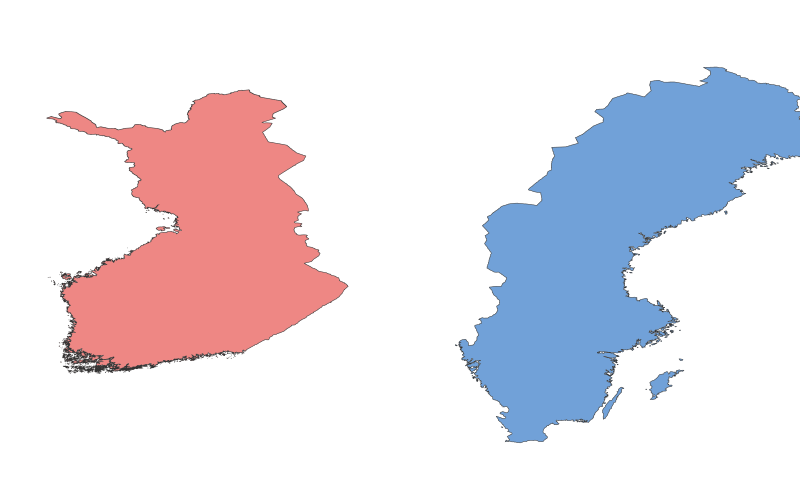Finland vs. Sweden: A Geographical Comparison

Geographical Comparison Table
| Category | Finland | Sweden |
|---|---|---|
| Location | Northern Europe, borders Sweden, Norway, Russia | Northern Europe, borders Norway, Finland |
| Size | 338,455 km² | 450,295 km² |
| Climate | Cold temperate, subarctic in the north | Temperate in south, subarctic in north |
| Natural Resources | Timber, iron, copper, zinc, hydropower | Iron ore, timber, hydropower, zinc |
| Urban Development | Helsinki (capital), Espoo, Tampere | Stockholm (capital), Gothenburg, Malmö |
| Transportation | Extensive road and rail networks, major ports | Well-developed rail and road systems, major ports |
Description of Finland and Sweden
Finland
History: Finland has a rich history influenced by Swedish and Russian rule before gaining independence in 1917. It was part of Sweden for over 600 years and later an autonomous Grand Duchy under Russia.
Culture: Finnish culture is known for its sauna traditions, design (e.g., Marimekko), and music (e.g., Jean Sibelius). The country celebrates its Nordic heritage while maintaining a unique identity.
Economy: Finland has a highly industrialized economy with key sectors including technology (Nokia), forestry, and engineering. It ranks high in innovation and education.
Sweden
History: Sweden was a dominant power in Northern Europe during the 17th century. It has been a neutral country since the early 19th century and joined the EU in 1995.
Culture: Swedish culture is famous for its contributions to music (ABBA), design (IKEA), and literature (Astrid Lindgren). The country emphasizes equality and sustainability.
Economy: Sweden boasts a diverse economy with strengths in automotive (Volvo), telecommunications (Ericsson), and green technology. It has a robust welfare system and high living standards.
Additional Notes
Both countries are part of the Nordic region and share similarities in their high quality of life, strong social welfare systems, and stunning natural landscapes. However, Finland's closer ties to Russia and Sweden's historical dominance in the region create distinct geopolitical and cultural nuances.